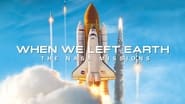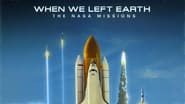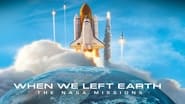Jurij Fedorov
Firstly. This documentary has a lot of great information and some great recordings from NASA's history. They are are must watch for any human being no matter in what documentary. But... it is made by amateurs.There is a an added shaky-cam effect to all the modern interviews. Why did they add it? I don't think anyone can answer this question. It also seems like they added it to the old recordings from their offices, but it could just be bad recordings. They also select the scenes where the old camera zooms? Why? I don't know. The worst thing is that we actually don't get to see any scene for over 10 seconds. But the average length of a scene is probably 3 seconds. And every scene is split up by small comments/interview segments. Why? Another thing is that they exaggerate everything. Everything is extremely dangerous, unsafe and stupid to even try... according to this documentary. They make something awesome and exiting seem more ridiculous than it actually is. Why? I don't know.It is very much worth seeing. But it is very badly made and should be remade. I love space and NASA so I gave it a 6. But it is an amateurish documentary. The documentary makers should be very much ashamed and NASA should be proud.greetings, a Russia man.
antimatter33
This is one of a several "what we did then" historical retrospectives of the NASA human space flight program. In its favor, it includes interviews with Neil Armstrong himself, who was famously averse to such things, and even James McDivitt and Frank Borman, who are rarely seen. There is interesting footage of geology training and so on that will appeal to space buffs.However, the editing is done in the choppy and affected style of a rock music video, which quickly becomes extremely tiresome. The music is beyond awful, a mishmash of orchestral fake-dramatic boilerplate episodes, something like the trashy background sound of a video game. The narration is done in an irritatingly over-serious manner. Combined with the bad music, it is nearly impossible to get through this series without turning the volume off and just enjoying the views. Unfortunately, the best part of the series is hearing the astronauts in their own words, and you can't do that without slurping down the treacly music and Commander McBragg narration as well. Ultimately, this sinks the series, which is a shame.Some day, this material should be re-edited without much music, because none is needed, or at least, it should be kept to a bare and spare minimum. One wonders where they find the composers of this trash and how they manage to get themselves paid.Gary Sinese unfortunately also lacks the vocal authority for documentary narration. But that is a minor quibble.-drl
nikishopping
I thoroughly enjoyed watching this series. Unlike many shows on space exploration in which the focus is on space itself, this series was presented with an emphasis on the people who were involved to make it happen. Viewers are treated to personal behind-the-scenes trials and tribulations of space program from the perspective of the people who were there. Personal anecdotes and experiences are interspersed throughout the series. I often found myself saying, "Oh, I didn't know that." For example, describing what Allen Shepperd said to Mission Control before his first take-off was amusing.This is an American show produced from the American perspective. Sorry to break it to some people but contrary to worldwide belief, America is NOT the world's country. When America says "We" it doesn't mean Russia, Canada, Europe, China, and Japan too. America is entitled to tell its own history without having to include everyone else's too. Russia is welcome to produce its own space program documentary. And when they do, I don't expect it to include shots of Cape Canaveral or soundbites from John Glenn.
litefantastic
Every story has two halves: the material, and the way the teller tells it. In this case, though the end product was impressive, the Discovery Channel oversold this production to a point that bordered on inadvertent desecration. The storytelling itself was, all in all, very good (the fact that all the viewers know the ending is something that really couldn't be helped). However, I think the emphasis the Discovery people placed on the program's HD nature was silly. Most of the footage consists of either grainy, spotty film, or first generation video telefeeds that are so primitive I found myself impressed that they could work at all. The people of Earth were awed to see the twitchy, flickering image of Neil Armstrong on the moon in 1969. The "HD" billing the program got is something I can only attribute to the consumer zeitgeist of modern America.The second (and worse) mistake the Discovery Channel made was to air ads for the miniseries DURING the series BEFORE it had ended. I can't say why, but that really %*&&ed me off. Maybe it's just because I'd like to really bathe in the majesty of human existence for just a MOMENT without someone using it as a tool to sell me something. Yes, it's very nice that the single greatest artifact of human effort is now available on DVD and Blu-Ray at a discounted price. Get stuffed.And yet, marketing flaws aside, it really is an awesome story, and the people who made it did it well. I really was, as I had been promised, shown things I'd never seen before. I watched Richard Nixon talk to Niel Armstrong. I watched men use hardware supplies to innovate their way out of carbon dioxide poisoning. I watched the Challenger and the Columbia come down in chunks. I watched the Earth rise up from beyond the horizon of the Moon.I'm still amazed that this was all so recent that the principle characters are still alive, and to hear them talk was to feel the power. Niel Armstrong and Buzz Aldrin and the first President Bush and scores more spoke into the cameras of what they had seen, or done, or helped with. I actually realized that "the Establishment," as our rigidly organized government and its projects are often cynically called, was capable of miracles of its own.Bon voyage.



